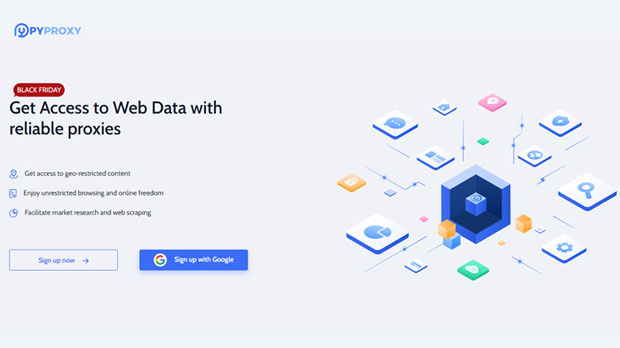In the world of internet security and privacy, proxies play a significant role in anonymizing online activity, improving connection performance, and bypassing regional restrictions. Among the most commonly used proxies are SOCKS5 and HTTP proxies. Many people often wonder whether SOCKS5 can fully replace HTTP proxies, given that both are used for routing network traffic. However, while they may seem similar on the surface, there are notable differences in their functionalities, performance, and limitations. This article explores whether socks5 proxies can replace HTTP proxies, outlines their differences, and examines where incompatibilities exist. Introduction to SOCKS5 and HTTP ProxiesBefore diving into whether SOCKS5 can replace HTTP proxies, it’s important to first understand what each type of proxy does.- socks5 proxy: The SOCKS5 protocol is a versatile proxy that operates at a lower level in the OSI (Open Systems Interconnection) model. It can handle all types of internet traffic, including TCP and UDP packets, making it capable of supporting a broader range of applications, such as streaming, gaming, and even peer-to-peer file sharing. SOCKS5 proxies do not interfere with the data being transmitted, meaning they do not modify or inspect the packets in any way.- HTTP Proxy: An HTTP proxy, on the other hand, works at the application layer and is specifically designed for web traffic (HTTP and HTTPS). It functions by forwarding HTTP requests from a client to a server, then returning the server’s response to the client. HTTP proxies are designed to optimize web browsing experiences, block unwanted content, or cache web pages for faster load times.Both SOCKS5 and HTTP proxies provide anonymity and help users bypass geo-restrictions or filter content, but they do so in different ways. Therefore, understanding their inherent differences is crucial when evaluating if one can replace the other.Key Differences Between SOCKS5 and HTTP ProxiesTo determine whether SOCKS5 can replace an HTTP proxy, we must first compare their features and limitations.1. Protocol Support: SOCKS5 supports a wider range of protocols and applications compared to HTTP proxies. While an HTTP proxy is limited to HTTP/HTTPS traffic, a SOCKS5 proxy can handle various types of internet protocols, including FTP, SMTP, and even peer-to-peer protocols. This flexibility allows SOCKS5 proxies to be used for a variety of tasks beyond just web browsing, such as downloading files, sending emails, or streaming multimedia content.2. Security Features: One key feature of SOCKS5 is its support for secure authentication methods. SOCKS5 proxies can require users to authenticate before accessing the proxy server, providing an extra layer of security. In contrast, most HTTP proxies do not offer such advanced authentication options and typically operate on an open or basic authentication system. This makes SOCKS5 proxies more secure for users concerned about unauthorized access.3. Traffic Handling: HTTP proxies are designed specifically to handle HTTP and HTTPS traffic, meaning they focus solely on web browsing. However, SOCKS5 proxies are much more flexible in how they handle traffic, allowing them to handle any type of traffic, including non-web traffic like P2P or torrents. This versatility means that SOCKS5 proxies can be used for a variety of applications, while HTTP proxies are limited to web traffic.4. Performance and Speed: When it comes to performance, SOCKS5 generally offers better speed and efficiency. This is because SOCKS5 proxies do not modify or filter the data packets, unlike HTTP proxies, which may involve more processing steps like data inspection or caching. Since SOCKS5 proxies work at a lower level, they tend to experience less latency and provide faster performance for non-HTTP-based applications.Incompatibilities Between SOCKS5 and HTTP ProxiesAlthough SOCKS5 and HTTP proxies share some similarities, there are several key incompatibilities that prevent SOCKS5 from completely replacing HTTP proxies in certain use cases. Some of these include:1. Lack of Web-Specific Features: HTTP proxies come with specific features designed for web browsing, such as caching, content filtering, and SSL interception. These features can significantly improve the browsing experience and offer greater control over what users access online. SOCKS5 proxies, on the other hand, do not have these specialized features. Therefore, if you rely on an HTTP proxy for content filtering or web caching, SOCKS5 cannot offer the same level of functionality.2. Inability to Handle HTTP-Specific Requests: Since SOCKS5 operates at a lower layer than HTTP proxies, it cannot natively handle HTTP-specific requests like cookies, headers, or web authentication protocols. This is a crucial issue for users who need to maintain sessions or work with HTTP-specific features that require manipulation of HTTP requests or responses. HTTP proxies are designed to manage these web-specific functions, whereas SOCKS5 proxies are unable to do so effectively.3. Web Traffic Optimization: HTTP proxies often come with built-in optimization features specifically tailored to improve web browsing speed and reliability, such as data compression and caching. SOCKS5 proxies do not provide these optimizations, meaning that while SOCKS5 may be faster in some cases due to less overhead, it lacks the specialized optimizations designed for web traffic that HTTP proxies offer.4. Application-Specific Support: HTTP proxies are typically used by web browsers and web-based applications that are designed to handle HTTP/HTTPS traffic. Many software applications, such as email clients or torrent clients, are not optimized to use HTTP proxies. While SOCKS5 proxies support a wider range of applications and can be used for a variety of internet traffic, HTTP proxies are not versatile enough to handle such tasks effectively.When SOCKS5 Can Be a Suitable Replacement for HTTP ProxiesDespite the differences and incompatibilities, SOCKS5 proxies can replace HTTP proxies in certain situations, particularly when:1. General Internet Traffic: If your primary concern is privacy, security, and bypassing geo-restrictions for general internet traffic (including non-web traffic), SOCKS5 is an ideal choice. Its ability to handle a variety of protocols beyond HTTP and HTTPS makes it more suitable for users who require a more flexible solution.2. Bypassing Geo-Restrictions and Censorship: SOCKS5 is also a great option for users in countries with heavy internet censorship. Its versatility allows it to bypass restrictions on various types of internet traffic, including video streaming and gaming, which HTTP proxies cannot effectively handle.3. Peer-to-Peer Applications: If you are using peer-to-peer applications such as torrent clients, SOCKS5 is a far better option than HTTP proxies. The latter are not designed to handle such protocols, while SOCKS5 provides the necessary support for P2P traffic.ConclusionIn summary, while SOCKS5 proxies offer a broader range of functionalities and can provide better performance for various types of internet traffic, they cannot fully replace HTTP proxies in all cases. SOCKS5 excels in versatility and security but lacks the web-specific features, optimizations, and compatibility with HTTP protocols that HTTP proxies provide. Ultimately, the choice between SOCKS5 and HTTP proxies will depend on the specific needs of the user, with SOCKS5 being the more flexible and secure option for general internet usage and non-web applications, while HTTP proxies are better suited for web browsing and specialized web traffic handling.
Jan 03, 2025
![arrow]()



















































